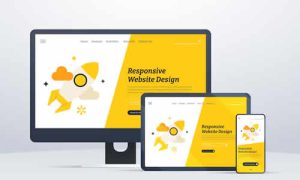Email marketing remains one of the most effective strategies for businesses looking to connect with their customers and increase sales. Although social media has gained traction, email still serves as a powerful tool for establishing lasting relationships. In this article, we will discuss best practices for creating email marketing campaigns that truly convert.
Know Your Target Audience
First and foremost, it is essential to know your target audience. This means understanding their preferences, interests, and behaviors. Use analytics tools to segment your contact list, allowing you to create personalized messages. The more relevant your content, the higher the likelihood of conversion.
Additionally, consider creating personas that can help guide your campaigns more accurately. By understanding who your customers are, you can create campaigns that genuinely resonate with them.
Create Engaging Subject Lines
The subject line of your email is your first chance to capture the recipient’s attention. An engaging subject can make the difference between an email that gets opened and one that gets ignored. Use techniques like intriguing questions, exclusivity, and urgency to encourage email opens. However, avoid making exaggerated promises; honesty is crucial for building trust.
Remember that it’s best to keep the subject line short and to the point, making it easy to read on mobile devices.
Provide Valuable Content
Once the email is opened, the next step is to offer valuable content. The content should be interesting and relevant to your audience. Consider including helpful tips, tutorials, industry news, or exclusive promotions. Including visual elements, such as images and graphics, can make the content more engaging.
Additionally, don’t forget to include clear and direct calls to action (CTAs). These prompts help the reader understand what the next step is that you want them to take, whether it’s visiting your website, downloading an e-book, or making a purchase.
Test and Optimize Your Campaigns
Continuous optimization is key to success in email marketing. Use A/B testing to experiment with different elements, such as subject lines, content, and CTAs. Analyzing the results will help you understand what works best for your audience.
Monitor metrics such as open rates, clicks, and conversions. This information is crucial for adjusting your future campaigns and ensuring that you are always improving.
Maintain a Consistent Frequency
Establishing a consistent frequency for your email campaigns is vital. Sending emails regularly, without overdoing it, helps keep your brand top of mind for customers. However, avoid bombarding your subscribers with too many emails, as this can lead to unsubscribes.
A good practice is to create a content calendar that outlines when and what will be sent. This helps plan seasonal campaigns and maintain relevance throughout the year.
Respect Privacy and Preferences
Last but not least, it is essential to respect your subscribers’ privacy. Ensure that all emails sent comply with data protection regulations, such as GDPR. Always offer the option to unsubscribe and respect your customers’ communication preferences.
















